Sentencing and Appeals
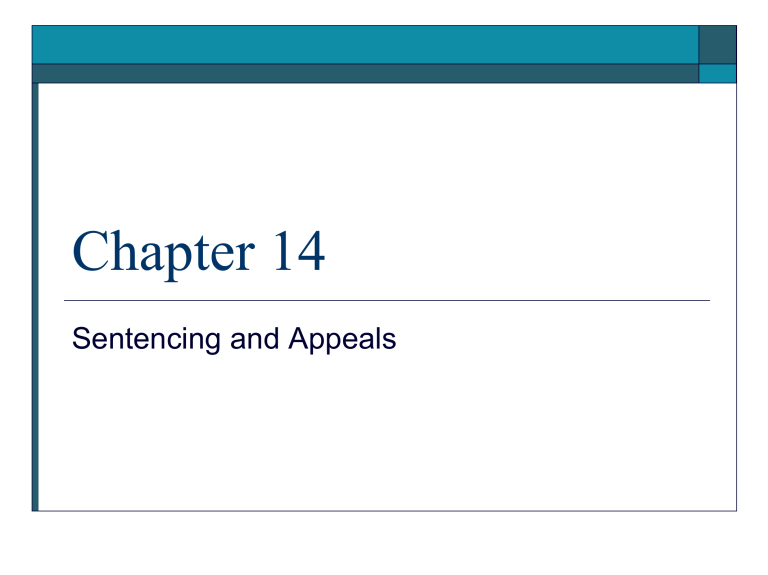
Chapter 14
Sentencing and Appeals
History of Sentencing in the U.S.
old English common law punished felonies with the death penalty
old English common law punished misdemeanors with public floggings
such penalties were brought to the American colonies
Bill of Rights (Eighth Amendment) prohibited cruel and unusual punishment
Benjamin Rush: “house of reform”
New York adopted a modified form of indeterminate sentencing
Criminal Punishment
George P. Fletcher: a violation of the rule results in the imposition of punishment by a court
Kennedy v. Mendoza-Martinez
concern that a law may be considered criminal punishment
Purposes of Punishment
retribution imposes punishment based on just deserts
offenders should receive the punishment that they deserve based on the seriousness of their criminal acts
deterrence specific deterrence imposes punishment to deter or discourage a defendant from committing a crime in the future
general deterrence punishes an offender as an example to deter others from violating the law rehabilitation
intended to reform the offender and to transform him/her into a law-abiding and productive member of society appeals to the idealistic notion that people are essentially good and can transform their lives when encouraged and given support
Purposes (cont.)
incapacitation the removal of offenders from society to prevent them from continuing to menace others
selective incapacitation singles out offenders who have committed certain serious offenses for lengthy incarceration
restoration stresses the harm caused to victims of crime
requires offenders to engage in financial restitution and community service to compensate the victim and the community and to “make them whole once again”
Type of Punishment
imprisonment
fines
probation
intermediate sanctions
death
Approaches to Sentencing
determinate sentences
mandatory minimum sentences
intermediate sentences
presumptive sentencing guidelines
Judicial Sentencing Process
often filed by a probation officer contains information regarding the defendant, including his/her criminal record and financial condition and other circumstances that may influence the defendant’s future behavior addresses aggravating and mitigating circumstances sentencing hearings right of allocution consecutive vs. concurrent sentences clemency vs. pardon
Sentencing Guidelines
1984 Sentencing Reform Act sentences under the federal guidelines are based on a complicated formula that reflects the seriousness and characteristics of the offense and the criminal history of the offender judges employ a sentencing grid and must sentence an offender within the narrow range where the offender’s criminal offense and criminal history intersect judges are required to document the reasons for criminal sentences and are obligated to provide a specific reason for an upward or downward departure from the sentenced authorized by the guidelines
Sentencing Guidelines (cont.)
federal guidelines are much more complicated than most state guidelines unconstitutional to enhance a sentence based on facts found to exist by the judge by a preponderance of the evidence rather than by a jury beyond a reasonable doubt federal and state sentencing guidelines are advisory, not mandatory
Determinate Sentences
controversy over the Anti–Drug Abuse Act of
1986
criticisms of determinate sentences
inflexibility plea bargaining increase in prison population disparate effects
Hutto v. Davis
Methods of Punishment
most courts have not limited cruel and unusual punishment to acts condemned at the time of passage of the Eighth Amendment but have viewed it as an evolving concept
Furman v. Georgia
controversies over capital punishment and its various methods of implementation
Capital Punishment
Furman v. Georgia
“punishment must not be excessive”
punishment must “fit the crime” punishment is to be imposed in an “evenhanded, nonselective, and nonarbitrary” manner
Woodson v. North Carolina
Gregg v. Georgia aggravating circumstances
mitigating circumstances weighing states vs. nonweighing states
Eighth Amendment and
Sentences for a Term of Years
the length of a criminal sentence is the province of elected state legislators
judicial intervention to review the
“proportionality” of a sentence for a term of years should be “extremely rare” and should be limited to criminal sentences that are
“grossly disproportionate” to the seriousness of the offense
three strikes laws
Equal Protection
it is unconstitutional for a judge to base a sentence on a defendant’s race, gender, ethnicity, or nationality a sentence should be based on defendant’s act rather than on a defendant’s identity
a defendant must demonstrate both a discriminatory impact and a discriminatory intent
Criminal Appeals
no due process right to appeal courts routinely express a belief in the need for appeals
Griffin v. Illinois final judgement rule interlocutory appeals plain error exception harmless error standard
Chapman v. United States automatic reversal rule retroactivity
Habeas Corups
collateral remedies a civil lawsuit in which the defendant (now called the petitioner or plaintiff) asks the court for a writ on the grounds that he/she is being unlawfully detained
William Blackstone: habeas corpus is “the most celebrated writ in the English law”
Article 1, Section 9, Paragraph 2 of the U.S.
Constitution: “The Privilege of the Writ of Habeas
Corpus shall not be suspended, unless when in Cases of
Rebellion or Invasion the Public Safety may require it”
Fay v. Noia
Justice Powell, Schneckloth v. Bustamonte : the costs of federal courts engaging in active habeas corpus review
Stone v. Powell
Requirements for Bringing a
Habeas Corpus Claim
plaintiff must allege a violation of a federal constitutional right or a violation of federal law the individual on whose behalf the petition is filed must be in custody
AEDPA: a state prisoner file a petition in federal district court
“within a year of the final State court review of the conviction and sentence . . . or the expiration of the time for seeking such review” the plaintiff must exhaust state remedies before filing a petition for habeas corpus
Requirements for Habeas Corpus (cont.)
whether the state court decision on the law and the facts is reasonable a district court decides the case based on the written trial record and on the written judgments of the state appellate courts the petitioner must demonstrate by a preponderance of the evidence that the constitutional error had a substantial and injurious impact or influence on the jury’s guilty verdict the individual filing a petition for habeas corpus may not rely on a new rule of law announced by the Supreme Court following the exhaustion of his or her direct state appeals
Requirements for Habeas Corpus (cont.)
a federal court will not hear a habeas corpus petition in those instances in which a defendant failed follow state procedures and did not raise an objection at trial and exhaust state appeals the successive petition doctrine prohibits a second petition that raises a claim that has been presented in a prior habeas petition the abuse of writ doctrine prohibits raising an issue that a defendant did not raise in the first petition, but could have raised



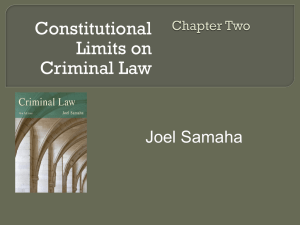
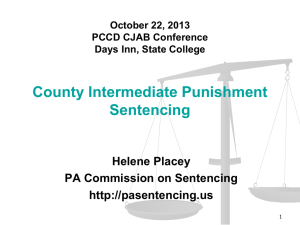



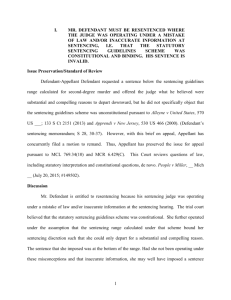
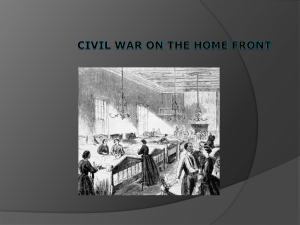
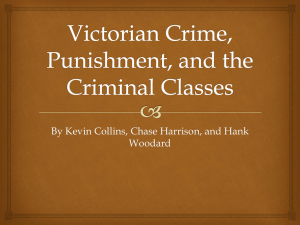

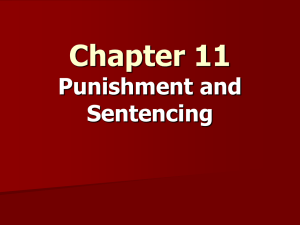

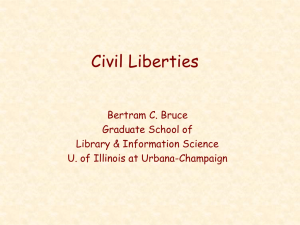
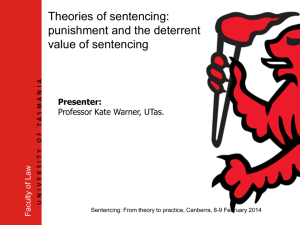
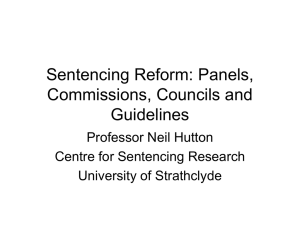
![[I] Introduction to Capital Punishment Law and Litigation 5](http://s3.studylib.net/store/data/007297673_1-b3a3ec929d461176d85d4acb84699e4c-300x300.png)